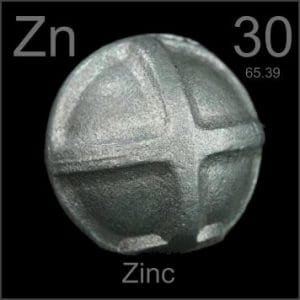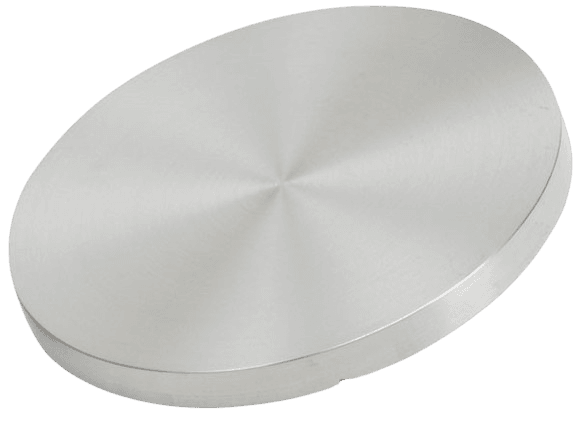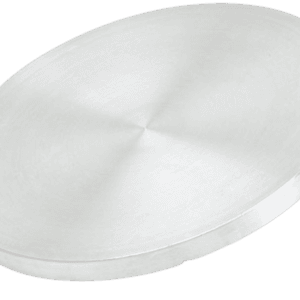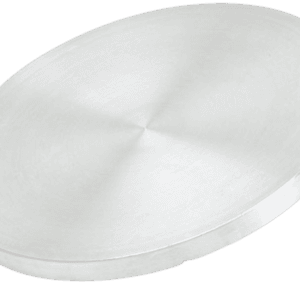ST0058 Zinc Sputtering Target, Zn
Chemical Formula: Zn
Catalog Number: ST0058
CAS Number: 7440-66-6
Purity: 99.9%, 99.95%, 99.99%, 99.995%
Shape: Discs, Plates, Column Targets, Step Targets, Custom-made
Zinc sputtering target come in various forms, purities, sizes, and prices. Thin Film Materials (TFM) manufactures and supplies top-quality sputtering targets at competitive prices.
Zinc Sputtering Target Description

The zinc sputtering target shares properties with its source material. Zinc, symbolized as “Zn,” is a chemical element whose name originates from the German word “zinc,” possibly derived from the Persian word “sing,” meaning stone. Zinc has been used since before 1000 BC and was discovered by Indian metallurgists. Its atomic number is 30, and it is located in Period 4 and Group 12 of the periodic table, belonging to the d-block. The relative atomic mass of zinc is 65.409 Daltons, with the number in brackets indicating the measurement uncertainty.
Zinc Sputtering Target Specification
| Atomic Number | 30 |
| Density | 7.14 g/cm (near r.t.) |
| Color/Appearance | Silver Gray |
| Thermal Conductivity | 116 W/m.K |
| Melting Point | 419.53 °C |
| Boiling Point | 907 °C |
| Coefficient of Thermal Expansion | 30.2 x 10-6/K |
| Z Ratio | 0.514 |
| Type of Bond | Indium, Elastomer |
Zinc Sputtering Target Application
Zinc sputtering materials are utilized in a variety of thin-film coating applications, including:
- CD-ROM production
- Decorative coatings
- Flat panel displays
- Functional coatings
- Optical information storage
- Glass coating for automotive and architectural glass
- Optical communications
Zinc Sputtering Target Bonding Service
Specialized bonding services for Zinc Sputtering Targets, including indium and elastomeric bonding techniques, enhance performance and durability. Thin Film Materials (TFM) ensures high-quality solutions that meet industry standards and customer needs.
We also offer custom machining of backing plates, which is essential for sputtering target assembly. This comprehensive approach improves target design flexibility and performance in thin film deposition. Our channels provide detailed information about bonding materials, methods, and services, helping clients make informed decisions.

Packaging
Our high purity zinc sputter target is clearly tagged and labeled externally to ensure efficient identification and quality control. Great care is taken to avoid any damage which might be caused during storage or transportation.
Get Contact
| Order Now | Zn Target 4N ø50.8*3.18mm, Zn Target 4N ø50.8*6.35mm, Zn Target 4N ø152.4*6.0mm Indium Bonded to 5083 Al B/Plate |
|---|
Related Products
Related products
FAQ
What is a sputtering target?
It’s the source material (in solid form) used in sputter deposition to eject atoms or molecules that then form a thin film on a substrate.
What materials are used to make sputtering targets?
Targets can be pure metals (e.g., gold, copper, aluminum), ceramics (e.g., Al₂O₃, SiO₂, TiO₂), alloys, or composites—chosen based on the film’s desired properties.
How are sputtering targets manufactured?
They are produced by processes such as melting/casting for metals or sintering (often with hot isostatic pressing) for ceramics and composite targets to ensure high density and purity.
How does sputter deposition work with these targets?
In a vacuum chamber, a plasma (typically argon) bombards the target, ejecting atoms that travel and condense on a substrate, forming a thin film.
What factors affect the life and performance of a sputtering target?
Key factors include the target’s purity, density, grain structure, and the sputtering yield (i.e. how many atoms are ejected per incident ion), as well as operating conditions like power density and gas pressure.
How do I know when a sputtering target needs to be replaced?
Operators monitor target erosion (often by measuring the depth of the eroded “race track”) or track total energy delivered (kilowatt-hours) until it reaches a threshold that can compromise film quality.
Why do some sputtering targets need to be bonded to backing plates?
Fragile materials (such as many ceramics or certain oxides) and precious metals often require a backing plate to improve cooling, mechanical stability, and to allow thinner targets that reduce material costs.
What is the difference between DC and RF sputtering for targets?
DC sputtering is used for conductive targets, while RF sputtering is necessary for insulating targets (like many oxides) because it prevents charge buildup on the target’s surface.
How does reactive sputtering differ from standard sputtering?
In reactive sputtering, a reactive gas (e.g., oxygen or nitrogen) is introduced to form compound films on the substrate, but it may also “poison” the target surface if not carefully controlled.
Can I use customer-supplied powders to make sputtering targets?
Many manufacturers prefer to control raw material quality by sourcing their own powders; using external powders can risk impurities and inconsistent target properties.
What storage and handling procedures are recommended for sputtering targets?
Targets should be stored in clean, dry conditions (often in original packaging or re-wrapped in protective materials) and handled with gloves to avoid contamination, ensuring optimal performance during deposition.
What key parameters affect sputtering deposition rates?
Deposition rate depends on factors such as target material and composition, power density, working gas pressure, substrate distance, and the configuration of the sputtering system (e.g., magnetron design).





Reviews
There are no reviews yet.